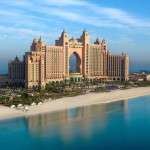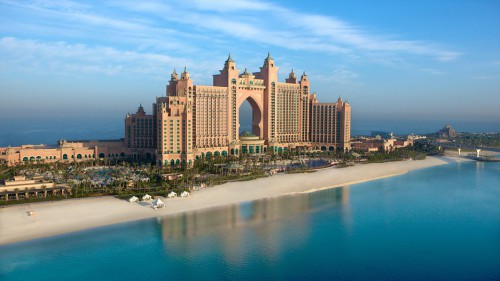Covering an area of 318 square km , Mashhad is the second most populous city in Iran and capital of Razavi Khorasan Province. It is located in the northeast of the country, close to the borders of Turkmenistan and Afghanistan. Its population is 3,131,586 . It was a major oasis along the ancient Silk Road connecting with Merv in the East.
The city is most famous and revered for housing the tomb of Imam Reza, the eighth Shia Imam.
History:
At the beginning of the 9th century (3rd century AH), Mashhad was a small village called Sanabad situated 24 km away from Tous. There was a summer palace of Humayd ibn Qahtaba, the governor of Khurasan. In 808, when Harun al-Rashid, Abbasid caliph, was passing through there to settle down the insurrection of Rafi ibn al-Layth in Transoxania, he became ill and died. He was buried under the palace of Humayd ibn Qahtaba. Several years later in 818 Ali al-Ridha was martyred by al-Ma’mun and was buried beside the grave of Harun.
After this event, the city was called Mashhad al-Ridha (the place of martyrdom of al-Ridha). Shias started visiting there for pilgrimage of his grave. By the end of the 9th century, a dome was built on the grave and many buildings and bazaars sprang up around it. During more than a millennium it has been devastated and reconstructed several times.
It was not considered a great city until Mongol raids in 1220, which caused the destruction of many large cities in Khurasan, leaving Mashhad relatively intact.
Later on, during the reign of the Timurid Shahrukh Mirza, Mashhad became one of the main cities of the realm. In 1418, his wife Goharshad funded the construction of an outstanding mosque beside the shrine, which is known as the Goharshad Mosque.The mosque remains relatively intact to this date, its great size an indicator to the status the city held in the 15th century.
Shah Ismail I, founder of the Safavid dynasty, conquered Mashhad after the death of Husayn Bayqarah and the decline of the Timurid dynasty. Mashhad was later captured by the Uzbeks during the reign of Shah Abbas I, only to be retaken by the Shah Abbas in 1597 after a long and hard struggle, defeating the Uzbeks in a great battle near Herat as well as managing to drive them beyond the Oxus River.
Shah Abbas I wanted to encourage Iranians to go to Mashhad for pilgrimage. He is said to have walked from Isfahan to Mashhad. During the Safavid era, Mashhad gained even more religious recognition, becoming the most important city of Greater Khorasan, as several madrasah and other structures were built besides the Imam Reza shrine.
Besides its religious significance, Mashhad has played an important political role as well. It saw its greatest glory under Nadir Shah, ruler of Iran from 1736 to 1747 and also a great benefactor of the shrine of Imam Reza, who made the city his capital. Mashhad was ruled by Shahrukh Afshar and remained the capital of the Afsharid dynasty during Zand dynasty until Agha Mohammad Khan Qajar conquered the then larger region of Khorasan in 1796.
In 1912, the sanctuary of Imam Reza was bombed by the Russian artillery fire , causing some damage, including to the golden dome, resulting in a widespread and persisting resentment in the Shiite Muslim world.
In 1935, a backlash against the modernizing, anti-religious policies of Reza Shah erupted in the Mashhad shrine. Responding to a cleric who denounced the Shah’s heretical innovations, corruption and heavy consumer taxes, many bazaaris and villagers took refuge in the shrine, chanted slogans such as “The Shah is a new Yazid.” For four days local police and army refused to violate the shrine and the standoff was ended when troops from Azerbaijan arrived and broke into the shrine, killing dozens and injuring hundreds, and marking a final rupture between Shi’ite clergy and the Shah.
Climate and weather:
In Mashhad, the climate is warm and temperate. The winter months are much rainier than the summer months in Mashhad. This climate is considered to be Csa according to the Köppen-Geiger climate classification. In Mashhad, the average annual temperature is 19.5 °C. In a year, the average rainfall is 590 mm
The driest month is June. There is 0 mm of precipitation in June. Most of the precipitation here falls in January, averaging 160 mm.
With an average of 26.7 °C, August is the warmest month. January is the coldest month, with temperatures averaging 11.6 °C.
Demographics:
The mashhadis are mostly Persians but there are also some Turk and kurd minorities.
The majority of mashhadis are twelver shias but there are also followers of baha’I islam and Christianity.
Transportation:
All sorts of public transportation are available in Mashhad to get around the city like: buses , taxis and metro .
Mashhad has a railway station 3 bus terminals and an international airport (Hashemi Nezhad intl. airport)
Tourism:
Regarding its special value in the Islamic world , Every year, millions of pilgrims travel to mashhad to visit the Imam Reza shrine and pay their tributes to Imam Reza, but mashhad is also home to some natural and historical sites such as: The tomb of nader shah and Kooh-sangi.
-
Hakim Abu ‘l-Qasim Ferdowsi Tousi (935–1025 CE), or Firdawsi, was a highly revered Persian poet and the author of the epic of Shahnameh (the Persian “Book of Kings”), which is...
See more
-
Darvishi Luxury Hotel is located in the main street to Imam Reza’s shrine, in a distance of 1400 meters from the shrine. This hotel is...
See more
-
-
0011810 days € 1,265
This tour incorporates many of the celebrated landmarks of central Iran. From the ancient ruins of Persepolis, the ceremonial and...
See more details


